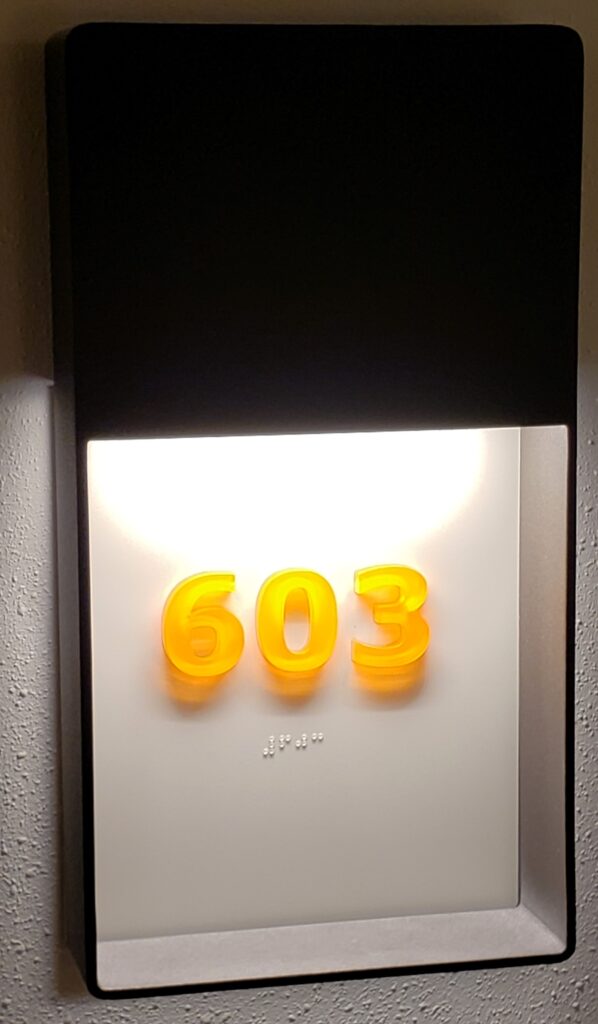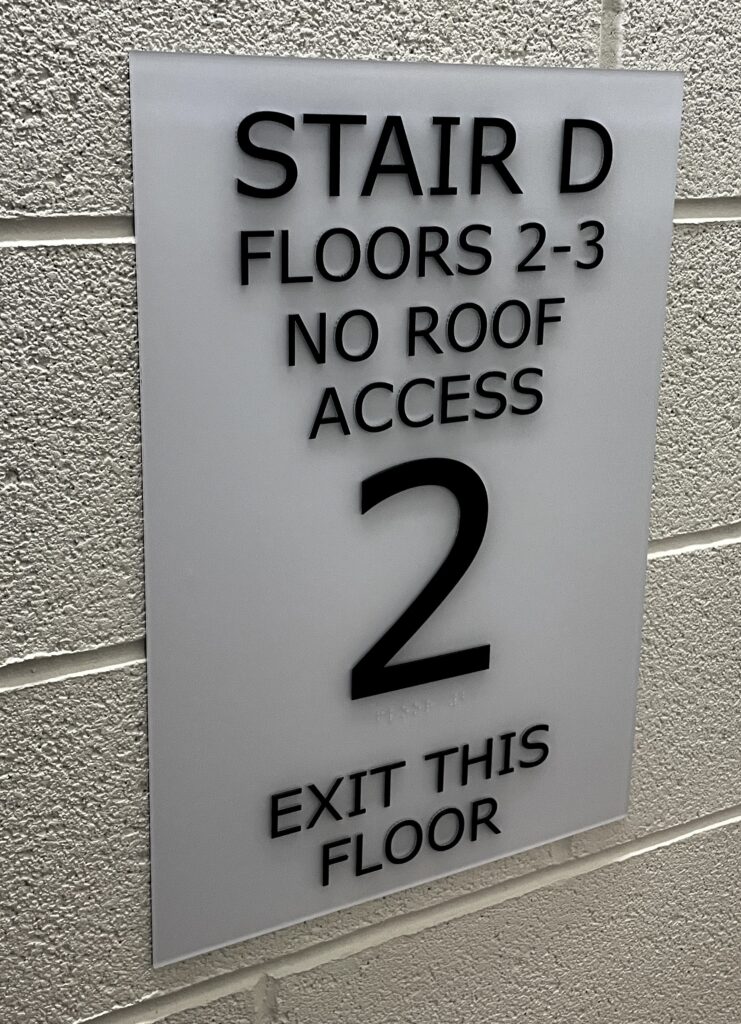Blog

ADA Signs: Ensuring Accessibility and Compliance
Creating an inclusive and accessible environment is not just a societal obligation but a legal requirement for businesses and public facilities. One of the key elements in this undertaking is the installation of ADA-compliant signs. This post will guide you through understanding ADA signs, their importance, and how to ensure your facility meets the necessary standards while offering an inviting space for all individuals.
Understanding ADA Signs
ADA signs are designed to help individuals with disabilities by providing easy-to-read information and directional guidance within any building or property. The term “ADA” refers to the Americans with Disabilities Act, which mandates that public spaces must be accessible to individuals with disabilities, including appropriate signage.
Compliance standards require that ADA signs have features such as Braille for the visually impaired, high contrast between the text and background for better visibility, and specific sizing and spacing for easy readability.
Types of ADA Signs
There’s a wide variety of ADA-compliant signs to meet the varied needs of individuals with disabilities, some of which include:
- Braille and tactile signs: These signs have raised letters and Braille characters, allowing visually impaired individuals to read them through touch.
- Pictograms and symbols: To communicate information quickly and without language barriers, symbols and pictograms are essential.
- Color contrast and visibility: ADA signs must have a high level of contrast between text and background to be easily discernible.
Many design options are available to create signs that are both functional and aesthetically pleasing.
Variety of ADA Sign Materials and Styles
When selecting ADA signs, it’s essential to consider both the functional and stylistic aspects to match the environment where they will be installed. Materials used in the production of ADA signs can range from durable plastics and acrylics to sophisticated metals like aluminum or brushed stainless steel, each adding a different aesthetic quality to the signage.
Acrylic: Often used for its versatility and professional appearance, acrylic signs can be custom-colored to match specific design needs while retaining the required visual and tactile compliance features.
Metal: Signs made from metal not only offer durability but also provide a high-end, corporate look. Metals such as brushed aluminum can be used to create signs with a contemporary feel that are sturdy and vandal-resistant.
Photopolymer: This material is a single-piece construction that allows for the incorporation of Braille and tactile lettering without additional processes, making it a reliable choice for ADA signage.
It’s important to note that regardless of the material or style chosen, the signs must meet all ADA compliance guidelines to provide the necessary accessibility for individuals with disabilities.

Installation of ADA Signs
The process of ADA sign installation is a methodical one that requires attention to detail to meet the guidelines set by the Americans with Disabilities Act (ADA). It begins by assessing the location for sign placement, ensuring that the signage will be clearly visible and unobstructed. The height and location need to comply with ADA requirements, typically between 48 inches minimum and 60 inches maximum above the floor. Next, tactile elements such as raised letters and Braille must be incorporated for the visually impaired. The signs have to feature high contrast between text and background for clear visibility. Finally, installation must be executed with precision to ensure durability and stability, preventing hazards for individuals with disabilities. Regular inspections and maintenance should follow to ensure ongoing compliance and accessibility.

Benefits of ADA Signs
By incorporating ADA-compliant signs into your facility, you not only improve overall accessibility but also enhance safety and navigation. It’s also a step to protect your business or organization from potential legal issues and fines related to non-compliance.
Designing Effective ADA Signs
When it comes to creating custom ADA signs, several factors are crucial for effectiveness and compliance:
- Font size, spacing, and style: Letters must be easily legible, with adequate size and spacing. Avoid using stylized fonts that can be difficult to read.
- Materials and finishes: Durability and legibility often depend on using the right materials and finishes for your signs.
- Placement and installation guidelines: Proper height and location are critical for ensuring that signs are useful and meet legal standards.
Common Mistakes to Avoid
Here are some pitfalls to steer clear of when it comes to ADA signage:
- Lack of proper signage: Failing to provide needed signage is one of the most significant compliance issues.
- Inaccurate or outdated information: Ensure your signs are current with the latest ADA standards and correctly guide users to their destinations.
- Inadequate signage visibility: Signs should be positioned where they are noticeable and at a height accessible to all visitors.
Conclusion
Understanding and conforming to ADA sign requirements is essential for any public facility. It demonstrates a commitment to creating an inclusive society and avoids the costly consequences of non-compliance. From custom ADA signs to business accessibility solutions, making sure you’re informed and proactive about ADA compliance is imperative.
For business owners, compliance officers, facility managers, architects, and interior designers, the responsibility of maintaining an inclusive environment extends beyond legal obligations – it’s a matter of respect and human dignity. Let’s work together to make accessibility a standard—not an afterthought.
Remember, when it comes to ADA compliance and business accessibility, staying informed, embracing custom solutions, and committing to inclusivity will pave the way for a more accessible world for everyone.
For more information, call Gotham Signs and Graphics at (914)315-6120.







